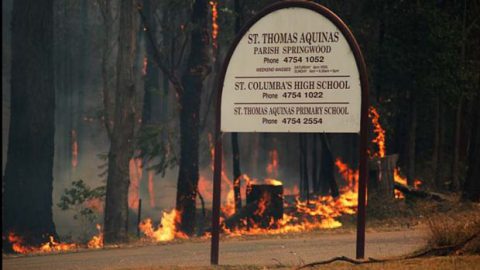We help developers, organisations, government bodies, and businesses develop emergency response and evacuation plans, including bushfire emergency response plans and bushfire emergency evacuation plans. These range from plans for small businesses through to emergency response and evacuation plans for very large events and communities. We have developed evacuation models for evaluating and planning the mass evacuation of up to 75,000 people.
Any Special Fire Protection Purpose development located in areas that contain bushfire prone vegetation will require a Bushfire Evacuation Plan to be prepared prior to obtaining an Occupation Certificate for a development. Examples of the type of facilities for which a Bushfire Evacuation Plan is required include aged care facilities, schools, hospitals, childcare centres, caravan parks, tourist facilities and places of worship.

Molino Stewart Developed bushfire management plans and a Bushfire Emergency Evacuation plan for the Asset Protection Zone around the Schools
A Bush Fire Emergency Management and Evacuation Plan identifies appropriate procedures for occupants to follow in the event of a bushfire. A Bushfire Evacuation Plan must outline the roles and responsibilities of facility staff during a bushfire emergency, the procedures to be followed should evacuation be required, the evacuation route and assembly points and the procedures for returning to a facility. It is important to note that bushfire evacuation may have a difference set of procedures to be followed when compared to structural fire evacuation plans or flood emergency evacuation plans and should only be prepared by a person familiar with bushfire hazards.
Molino Stewart has considerable experience in developing emergency response and evacuation plans for a range of natural hazards that adopt the AS3745-2010 Planning for Emergencies in Facilities.
Example Case Study:
St Columbas and St Thomas Aquinas schools Winmalee.
The Project
St Columbas High School and St Thomas Aquinas Primary School were developed many decades ago on the site of a former Catholic Seminary secluded in a beautiful bushland setting in the Blue Mountains west of Sydney. Molino Stewart became involved in the development approval for proposed new buildings on each of the sites.
Their bushland setting meant that asset protections zones (APZs) were needed to protect the new and existing buildings from bushfire to meet current Planning for Bushfire Protection standards. Proposed and existing buildings also needed to be made compliant with current Planning for Bushfire Protection requirements.
The Challenges
Each site presented some particular challenges including:
- Existing demountable buildings within the flame zone
- A single private access road more than 1km long through dense bushland
- The site being contiguous with the Blue Mountains National Park
- Endangered ecological communities protected under both State and Commonwealth legislation being within the areas where the asset protection zones needed to be created
- Buildings which were listed as State Significant on the NSW Heritage Register which limited the modifications which could be made to the existing buildings
The Assignment
Molino Stewart was engaged to:
- Prepare environmental impact assessment documentation to support development approval for each development
- Undertake ecological surveys and ecological impact assessments
- Undertake bushfire hazard assessments
- Work with the the client, architects, school site managers, Council and the NSW Rural Fire Service to develop a design for the proposed buildings and asset protection zones and treatments for the existing buildings which reduced bushfire risks at both schools without compromising the biodiversity values of the surrounding bushland or the heritage values of listed buildings
- Develop comprehensive combined ecological and bushfire management plans for the ongoing management of the APZs
- Work with the school to improve its bushfire emergency evacuation plan
- Develop briefs, assist with contractor selection and carry out surveillance for the thinning of vegetation within the APZs.
The Outcomes
Both developments were approved and constructed and the APZs created. Molino Stewart received the following feedback:

“You have done an excellent job in providing a clear and workable document to guide the required vegetation management activities in an appropriate and sustainable manner”
Deborah Friedewald Blue Mountains City Council

“Molino Stewart proved to be highly capable of providing the services required for the development of the Integrated Bushfire and Vegetation management Plan and thereafter proved to be suitable responsive during the development assessment process with Blue Mountains City Council. Molino Stewart has consistently provided sound advice and effective management of specialist consultants related to compliance with the statutory requirements for development, use and management of the site.”
Bill Togher Senior Facilities Manager Catholic Education


